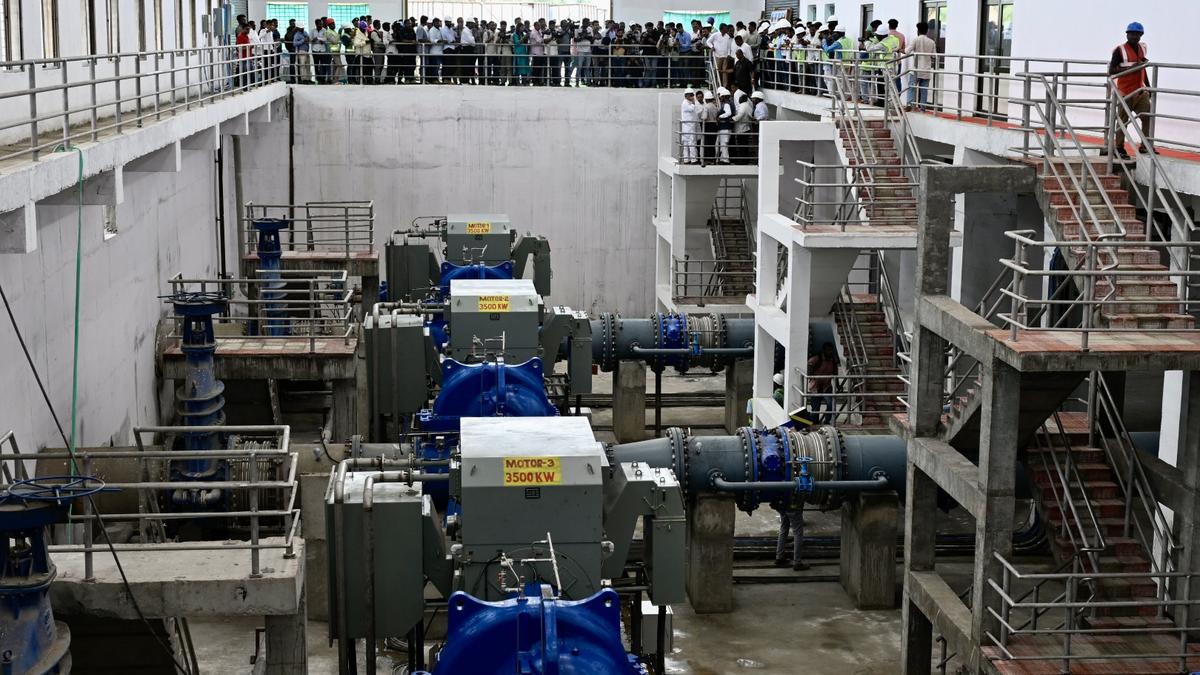
Cauvery in the pipeline, but 110 villages on Bengaluru’s outskirts have ‘connection’ problems Premium
The Hindu
Seventeen summers back, 110 villages on the city’s outskirts became part of the Bruhat Bengaluru Mahanagara Palike (BBMP). Lakhs of residents dreamt of Cauvery water supply as the inevitable next step. But shattering that hope, the supply remained a pipe dream as they desperately sought tankers. Will the imminent commissioning of the Cauvery fifth stage finally end their woes? Not really.
Seventeen summers back, 110 villages on the city’s outskirts became part of the Bruhat Bengaluru Mahanagara Palike (BBMP). Lakhs of residents dreamt of Cauvery water supply as the inevitable next step. But shattering that hope, the supply remained a pipe dream as they desperately sought tankers. Will the imminent commissioning of the Cauvery fifth stage finally end their woes? Not really.
Potentially, the 5th Stage could be a game-changer. Bengaluru’s current Cauvery water supply of 1,450 Million Litres per Day (MLD) through the existing four stages, could touch a whopping 2,200 MLD and beyond once Stage 5 is commissioned. The Bangalore Water Supply and Sewerage Board (BWSSB) anticipates that with the 5th Stage, 3 lakh connections will be added to the existing 1.06 million across the city.
So, where is the problem? Only about 55,000 of the estimated 3.5 lakh households in these villages have even applied for the Cauvery water connection. To bridge this huge gap, BWSSB has been forced to undertake a ‘Cauvery at your doorstep’ campaign. Work on the project commenced in 2018 with a ₹5,500 crore loan from Japan International Cooperative Agency (JICA), but missed several deadlines due to multiple factors.
This delay has been one big reason for the residents’ reluctance to now apply for the piped supply of Cauvery water. The tanker supply system is now well-entrenched in all the areas covered by the 5th Stage, and residents are wary about completely switching to the BWSSB network. The 5th Stage supply covers villages spread across Yeshwanthpura, Bangalore South, Byatarayanapura, T. Dasarahalli, Mahadevapura, Rajarajeshwarinagar, and Bommanahalli and surrounding areas.
“Cauvery water supply has not been reliable. It keeps fluctuating and they release water only twice a week. The supply has never been consistent because it is manually released and the lineman becomes the king. It is not automated, although it is easy to do that,” explains Nagesh Aras, a lake activist and resident of Bellandur village area. His apartment was among the first few that had taken the BWSSB connection when the pipelines first came up.
This experience has made other residents of the 110 villages wary of depending only on Cauvery supply. As Nagesh points out, “when the supply becomes irregular, we have to give some small contract to the tanker guys. It is like an insurance. Often the Cauvery supply faces issues like low pressure and we suddenly run out of water.”
Tankers are thus seen as a relatively dependable backup. “During water shortage periods, the tanker operators know who their regular, premium, contracted customers are. So they will get the priority and not the one-off customer who asks for five tankers. It is like a loyalty discount. For many people, the tanker operators are seen as more reliable, more reachable and accessible than someone from the BWSSB,” says Arun Kumar from the Bangalore Apartments Federation (BAF).

Lokesh appeals to Telugu diaspora to invest in Andhra Pradesh and contribute to its growth. Participating in a meeting organised by the A.P. Non-Resident Telugu Society and A.P. Economic Development Board in Singapore, he promises necessary hand-holding to the Telugu entrepreneurs coming forward to partner with the government.





















 Run 3 Space | Play Space Running Game
Run 3 Space | Play Space Running Game Traffic Jam 3D | Online Racing Game
Traffic Jam 3D | Online Racing Game Duck Hunt | Play Old Classic Game
Duck Hunt | Play Old Classic Game










